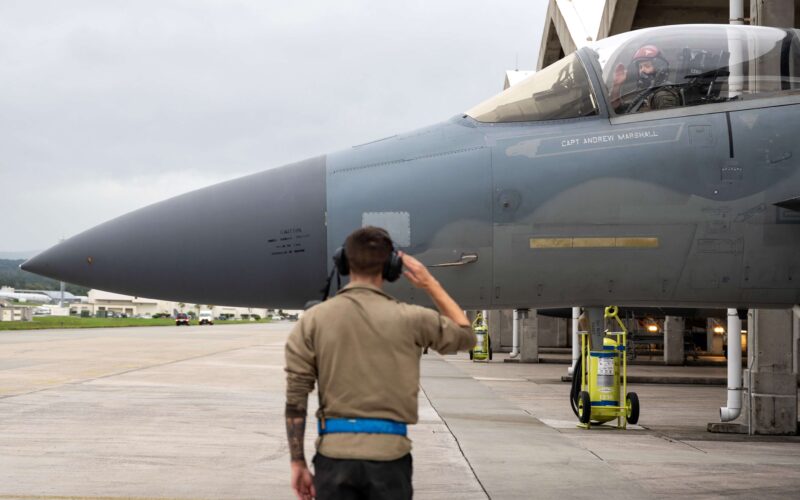The US Air Force has begun its progressive withdrawal of F-15 fighters from Japan despite concern among some US lawmakers.
On December 1, 2022, the 18th Wing of the USAF housed in Kadena Air Base on Okinawa Island announced the first departure of several F-15C Eagles towards the United States.
“This is the beginning of a significant journey for the 18th Wing,” said Brig. Gen. David S. Eaglin, 18th Wing commander. “This is going to take us from where we are today to a better place in the future where we will have modernized fighters here at Kadena to better protect our allies and ensure a free and open Indo-Pacific.”
Two squadrons of F-15 fighters (the 44th Fighter and the 67th Fighter Squadrons) have been permanently based in Japan since 1979. However, on October 28, 2022, the USAF announced that the aging Eagles would be progressively phased out over two years.
Expected to be retired in the 2020s for some time, the F-15 was instead developed into yet another iteration, named the F-15EX Advanced Eagle, which prompted a needed technological leap for the aging airframe. The F-15EX will progressively replace the aging F-15C/D fleets within the USAF.
To replace the capacity gap, F-22 Raptors fighters will be deployed from Alaska to Okinawa on a rotational basis.
The Lockheed Martin F-22 Raptor, which entered service in 2005, is the world’s first mass-produced fifth-generation fighter jet, as well as the first air superiority fighter to use passive stealth technology.
The decision was met with interrogations among Republican lawmakers, who sent an open letter to Defense Secretary Lloyd Austin to voice their concerns.
“While we agree with the need to modernize the Air Force’s fleet in order to counter the rising threat of the People’s Liberation Army, […] plans to replace permanently-based fighters with rotational forces will lead to a tangible reduction in American forward combat power in the Indo-Pacific, lowering the bar for aggression,” the letter read.

